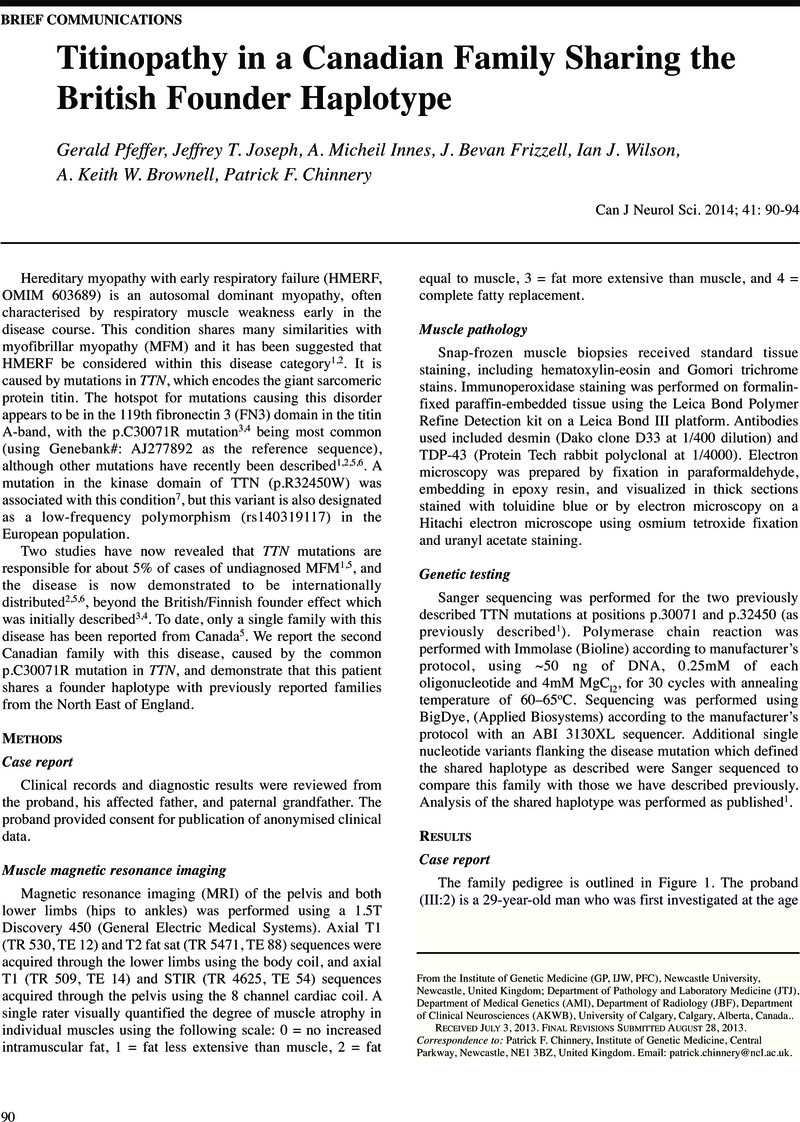Crossref Citations
This article has been cited by the following publications. This list is generated based on data provided by Crossref.
Chauveau, Claire
Rowell, John
and
Ferreiro, Ana
2014.
A Rising Titan:TTNReview and Mutation Update.
Human Mutation,
Vol. 35,
Issue. 9,
p.
1046.
Pfeffer, Gerald
Sambuughin, Nyamkhishig
Olivé, Montse
Tyndel, Felix
Toro, Camilo
Goldfarb, Lev G.
and
Chinnery, Patrick F.
2014.
A new disease allele for the p.C30071R mutation in titin causing hereditary myopathy with early respiratory failure.
Neuromuscular Disorders,
Vol. 24,
Issue. 3,
p.
241.
Gerull, Brenda
2015.
The Rapidly Evolving Role of Titin in Cardiac Physiology and Cardiomyopathy.
Canadian Journal of Cardiology,
Vol. 31,
Issue. 11,
p.
1351.
Ferreiro, Ana
and
Andoni Urtizberea, J.
2017.
Pathologies musculaires liées à la titine.
médecine/sciences,
Vol. 33,
Issue. ,
p.
16.
Ávila-Polo, Rainiero
Malfatti, Edoardo
Lornage, Xavière
Cheraud, Chrystel
Nelson, Isabelle
Nectoux, Juliette
Böhm, Johann
Schneider, Raphaël
Hedberg-Oldfors, Carola
Eymard, Bruno
Monges, Soledad
Lubieniecki, Fabiana
Brochier, Guy
Thao Bui, Mai
Madelaine, Angeline
Labasse, Clémence
Beuvin, Maud
Lacène, Emmanuelle
Boland, Anne
Deleuze, Jean-François
Thompson, Julie
Richard, Isabelle
Taratuto, Ana Lía
Udd, Bjarne
Leturcq, France
Bonne, Gisèle
Oldfors, Anders
Laporte, Jocelyn
and
Romero, Norma Beatriz
2018.
Loss of Sarcomeric Scaffolding as a Common Baseline Histopathologic Lesion in Titin-Related Myopathies.
Journal of Neuropathology & Experimental Neurology,
Vol. 77,
Issue. 12,
p.
1101.





